Katzung’s Basic and Clinical Pharmacology, 16th Edition [PDF Download]

By Todd W. Vanderah
Presented in full-color and packed with hundreds of illustrations, Katzung’s Basic and Clinical Pharmacology PDF is the wide-ranging, engaging guide students have counted on for decades. To be as clinically relevant as possible, the book includes sections that specifically address the clinical choice and use of drugs in patients and the monitoring of their effects, along with case studies that introduce clinical problems.
Each chapter opens with a case study, covers drug groups and prototypes, and closes with summary tables and diagrams that encapsulate important information. Updated to reflect the latest research, this sixteenth edition features a new chapter on cannabinoids, USMLE-style questions, new drug tables, and more.
Katzung’s Basic and Clinical Pharmacology, 16th Edition Features:
- 330 full-color illustrations
- 100 drug tables
- 50 USMLE-style questions
- Chapter on cannabinoids
- A strong emphasis on drug groups and prototypes
- Case studies and chapter-ending summary tables
- Organization that reflects the syllabi of pharmacology courses
- Descriptions of important new drugs
???? Table of Contents
????
- SECTION I: BASIC PRINCIPLES
- Introduction: The Nature of Drugs & Drug Development & Regulation
- Drug Receptors & Pharmacodynamics
- Pharmacokinetics & Pharmacodynamics: Rational Dosing & the Time Course of Drug Action
- Drug Biotransformation
- Pharmacogenomics
- SECTION II: AUTONOMIC DRUGS
- Introduction to Autonomic Pharmacology
- Cholinoceptor-Activating & Cholinesterase-Inhibiting Drugs
- Cholinoceptor-Blocking Drugs
- Adrenoceptor Agonists & Sympathomimetic Drugs
- Adrenoceptor Antagonist Drugs
- SECTION III: CARDIOVASCULAR-RENAL DRUGS
- Antihypertensive Agents
- Vasodilators & the Treatment of Angina Pectoris & Coronary Syndromes
- Drugs Used in Heart Failure
- Agents Used in Cardiac Arrhythmias
- Diuretic Agents
- SECTION IV: DRUGS WITH IMPORTANT ACTIONS ON SMOOTH MUSCLE
- Histamine, Serotonin, Anti-Obesity Drugs, & the Ergot Alkaloids
- Vasoactive Peptides
- The Eicosanoids: Prostaglandins, Thromboxanes, Leukotrienes, & Related Compounds
- Nitric Oxide
- Drugs Used in Asthma & Chronic Obstructive Pulmonary Disease
- SECTION V: DRUGS THAT ACT IN THE CENTRAL NERVOUS SYSTEM
- Introduction to the Pharmacology of CNS Drugs
- Sedative-Hypnotic Drugs
- The Alcohols
- Antiseizure Medications
- General Anesthetics
- Local Anesthetics
- Skeletal Muscle Relaxants
- Pharmacologic Management of Parkinsonism & Other Movement Disorders
- Antipsychotic Agents & Lithium
- Antidepressant Agents
- Opioid Agonists & Antagonists
- Drugs of Abuse
- SECTION VI: DRUGS USED TO TREAT DISEASES OF THE BLOOD, INFLAMMATION, & GOUT
- Agents Used in Cytopenias; Hematopoietic Growth Factors
- Drugs Used in Disorders of Coagulation
- Agents Used in Dyslipidemia
- Nonsteroidal Anti-Inflammatory Drugs, Disease-Modifying Antirheumatic Drugs, Nonopioid Analgesics, & Drugs Used in Gout
- SECTION VII: ENDOCRINE DRUGS
- Hypothalamic & Pituitary Hormones
- Thyroid & Antithyroid Drugs
- Adrenocorticosteroids & Adrenocortical Antagonists
- The Gonadal Hormones & Inhibitors
- Pancreatic Hormones & Glucose-Lowering Drugs
- Agents That Affect Bone Mineral Homeostasis
- SECTION VIII: CHEMOTHERAPEUTIC DRUGS
- Beta-Lactam & Other Cell Wall- & Membrane-Active Antibiotics
- Tetracyclines, Macrolides, Clindamycin, Chloramphenicol, Streptogramins, Oxazolidinones, & Pleuromutilins
- Aminoglycosides & Spectinomycin
- Sulfonamides, Trimethoprim, & Quinolones
- Antimycobacterial Drugs
- Antifungal Agents
- Antiviral Agents
- Miscellaneous Antimicrobial Agents; Disinfectants, Antiseptics, & Sterilants
- Clinical Use of Antimicrobial Agents
- Antiprotozoal Drugs
- Pharmacology of the Antihelminthic Drugs
- Cancer Chemotherapy
- Immunopharmacology
- SECTION IX: TOXICOLOGY
- Introduction to Toxicology: Occupational & Environmental
- Heavy Metal Intoxication & Chelators
- Management of the Poisoned Patient
- SECTION X: SPECIAL TOPICS
- Special Aspects of Perinatal & Pediatric Pharmacology
- Special Aspects of Geriatric Pharmacology
- Dermatologic Pharmacology
- Drugs Used in the Treatment of Gastrointestinal Diseases
- Cannabinoid Drugs
- Therapeutic & Toxic Potential of Over-the-Counter Agents
- Dietary Supplements & Herbal Medications
- Rational Prescribing & Prescription Writing
- Important Drug Interactions & Their Mechanisms
| File Size | 316 MB |
| File Format | |
| Download link | Free Download | Become a Premium, Lifetime Deal |
| Updates & Support | Join Telegram Channel To Get New Updates | Broken Link |
| Become a Premium |  |
| More Books: | Browse All Categories |



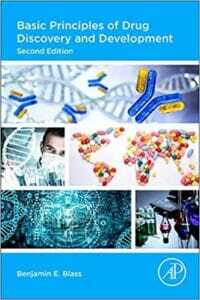



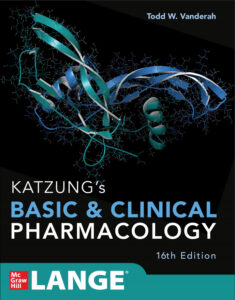



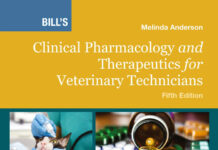
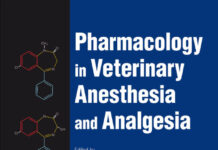


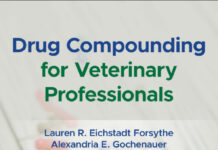
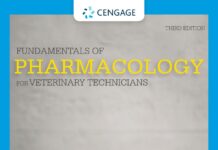
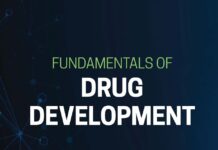







![Ettinger’s Textbook of Veterinary Internal Medicine 9th Edition [PDF+Videos] Ettinger’s Textbook of Veterinary Internal Medicine 9th Edition [True PDF+Videos]](https://www.vet-ebooks.com/wp-content/uploads/2024/10/ettingers-textbook-of-veterinary-internal-medicine-9th-edition-100x70.jpg)

![Textbook of Veterinary Diagnostic Radiology 8th Edition [PDF+Videos+Quizzes] Thrall’s Textbook of Veterinary Diagnostic Radiology, 8th edition PDF](https://www.vet-ebooks.com/wp-content/uploads/2019/09/textbook-of-veterinary-diagnostic-radiology-8th-edition-100x70.jpg)






